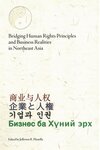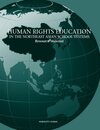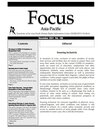(In Malaysia, the uppermost court is the Federal Court, followed by the Court of Appeal, then the High Court.)
Suhakam, Malaysia's national human rights commission, had issued a press statement expressing concern over the government's arrest of seven activists on April 11, 2001. The activists had been critical of the government's prosecution of former Deputy Prime Minister Anwar Ibrahim, who had fallen out of favor with then-Prime Minister Mahathir Muhammad. The government had used the Internal Security Act (ISA) to detain the protestors. Suhakam accounced that it would recommend that the government repeal the ISA or amend it.
In its opinion, the High Court criticized Suhakam's statement as ''an unlawful interference with the lawful exercise of discretion of the detaining authority.'' The High Court said that any given court was ''confined in its duty of ascertaining what the law is and a corresponding application of it . . . [A court] cannot afford, nor should it afford itself, the luxury of going beyond that. Confusing the law as it is with what it can or should or ought to be in the area of the law as in this case will only give false hopes to the detainees and their understandably distraught loved ones.''
In so holding, the High Court took a narrow view of the role of courts in reviewing executive actions. Thus, international standards, under this view, could be interpreted narrowly as well, including human rights standards. The High Court also noted that the Universal Declaration of Human Rights allowed for human rights limitations in the interest of public order. Thus, under this view, Suhakam could not complain about ISA restrictions of human rights.
In so doing, the High Court tried to localize international human rights law and bring into the government's view of how human rights law should be implemented. Here, the High Court had interpreted the Universal Declaration of Human Rights through the Human Rights Commission of Malaysia Act. It had then interpreted the HRCMA through the Constitution, which eschewed greater restrictions on human rights than the Universal Declaration of Human Rights. The High Court's opinion indicated that courts were to fit international human rights law into domestic law standards, essentially reducing the applicability of international human rights law.
The detainees had applied for habeas corpus. The High Court rejected the application.
The case was appealed to the highest court of Malaysia, the Federal Court. The Federal Court, in a ''schizophrenic'' decision, held that the detention by the government was mala fide (the only basis on which a court may review an ISA detention order) because it was used for ''intelligence gathering'' and ''unconnected with national security.'' However, the Federal Court did not order the prisoners released, as their detention was made under a subsequent ministerial order not the subject of the prisoners' habeas corpus application. Also, the Federal Court held that the HRCMA provided only ''an invitation to look at the 1948 Declaration if one was disposed to do so.'' Thus, the Federal Court had maneuvered itself and manipulated the HRCMA's wording to preserve Malaysia's own domestic law, at the expense of international human rights law. This case illustrates how Malaysian courts see Suhakam as a possible harbinger of unwelcome international norms.
(found in ''Situating Suhakam: Human Rights Debates and Malaysia's National Human Rights Commission'' by Amanda Whiting, Stanford Journal of International Law, Winter 2003, Volume 39, Number 1, pp. 84-88)







